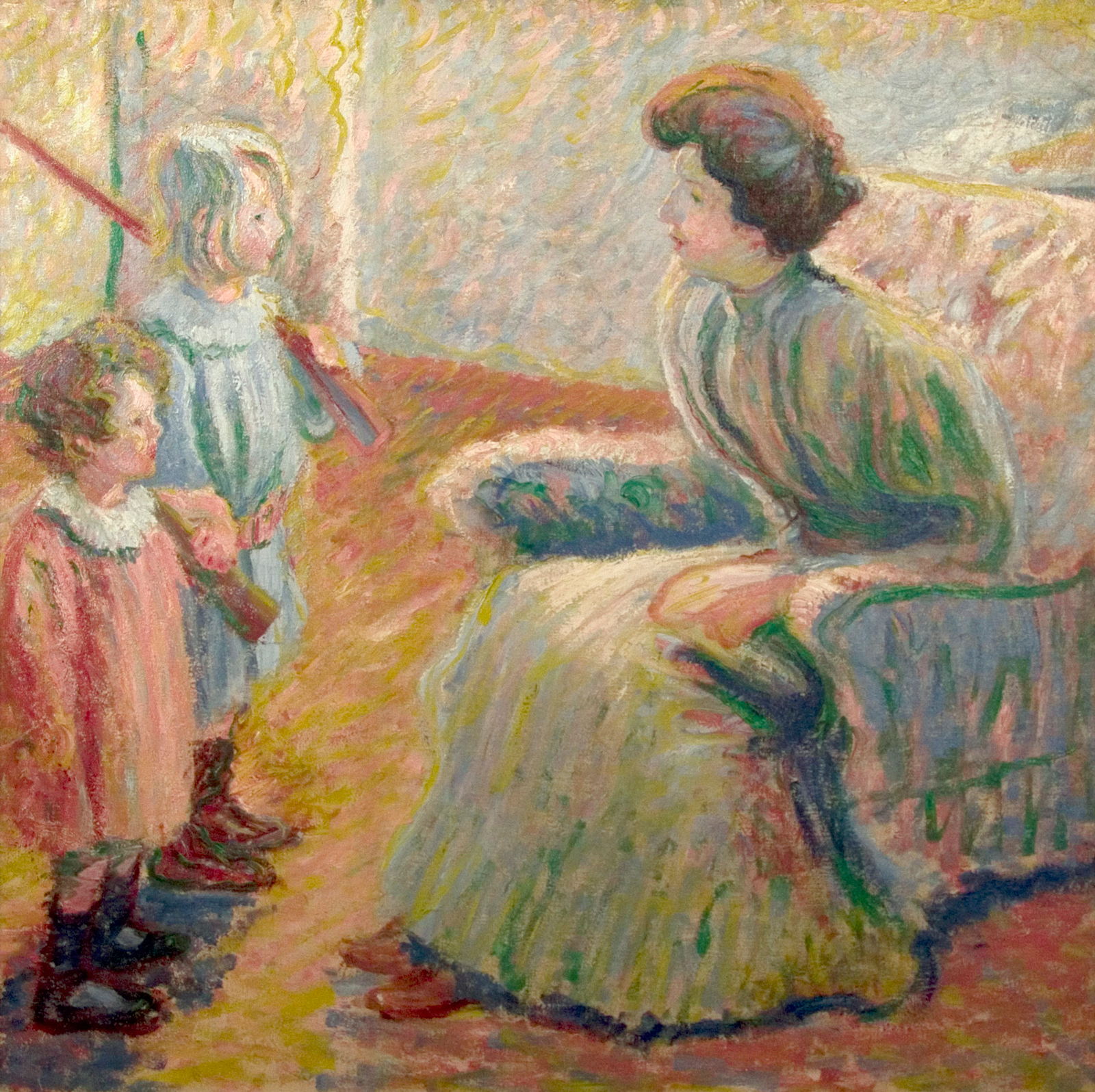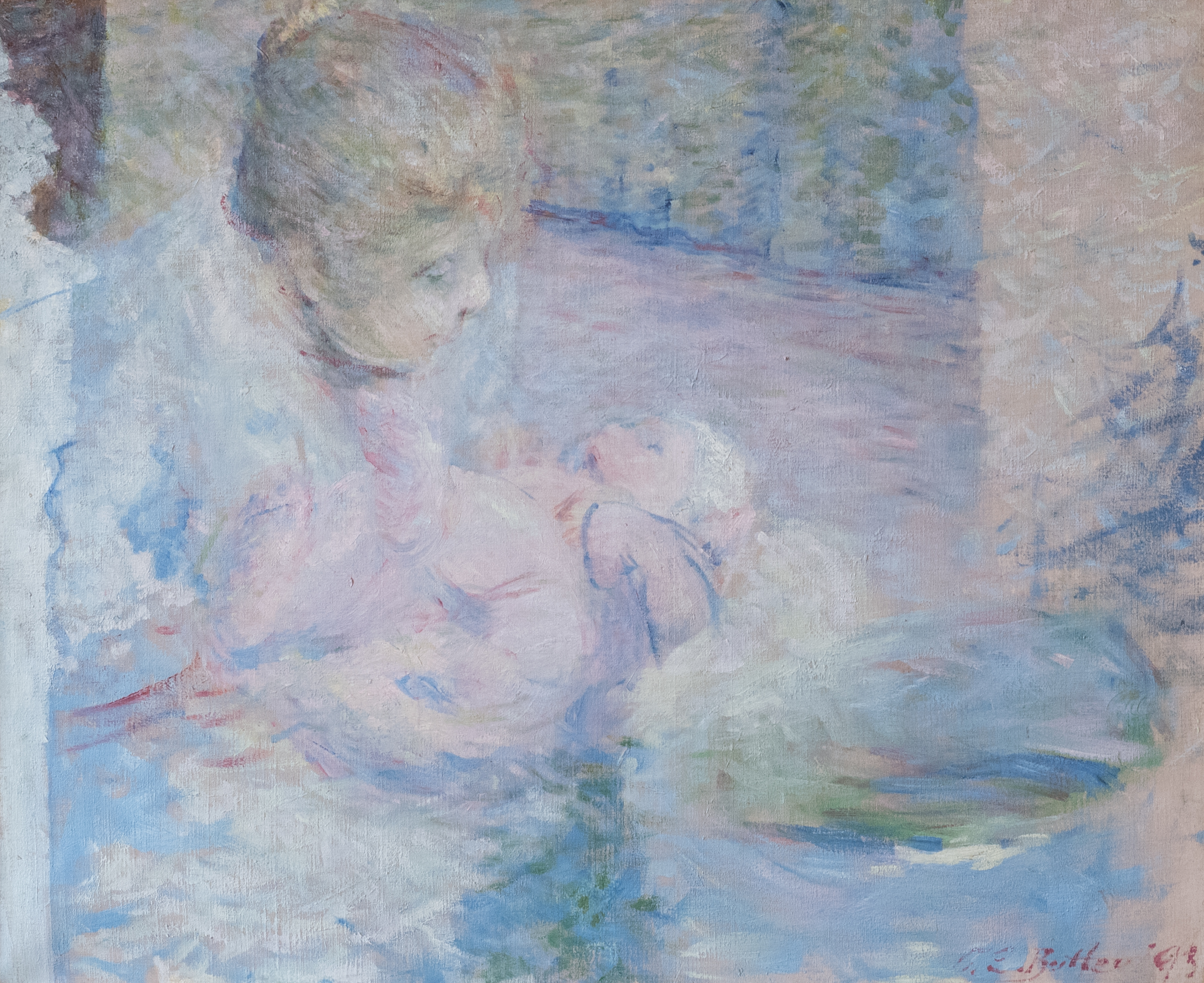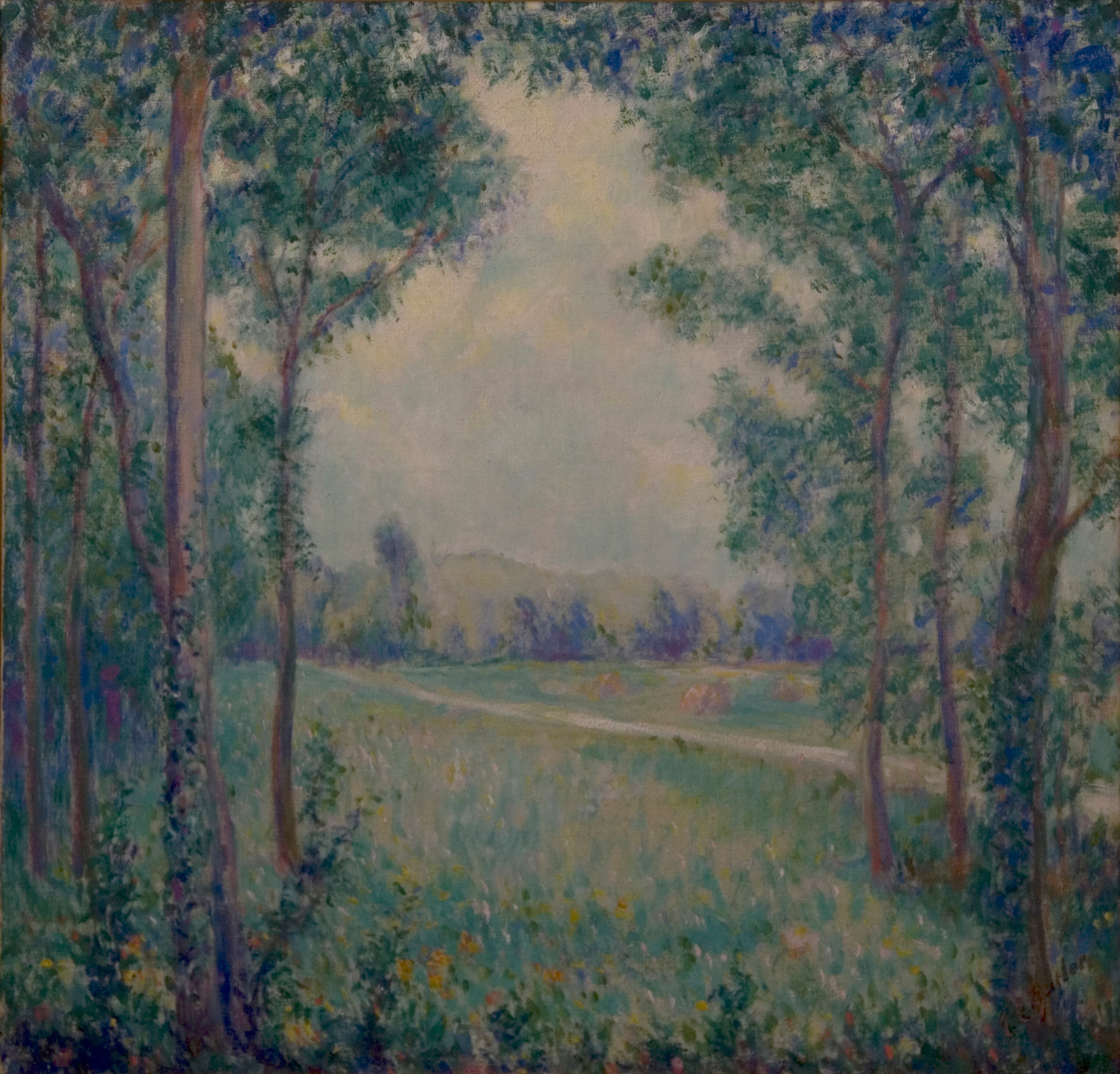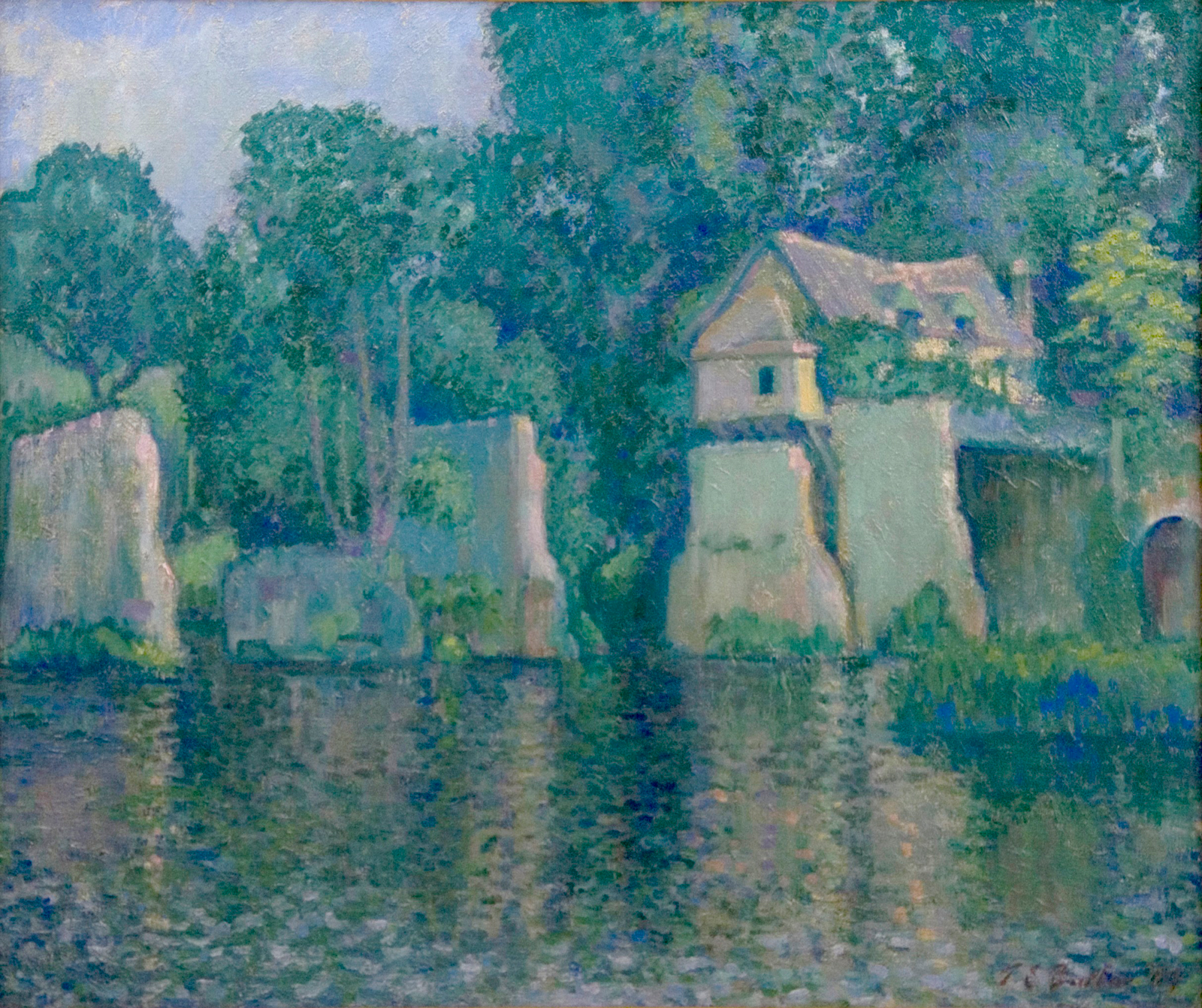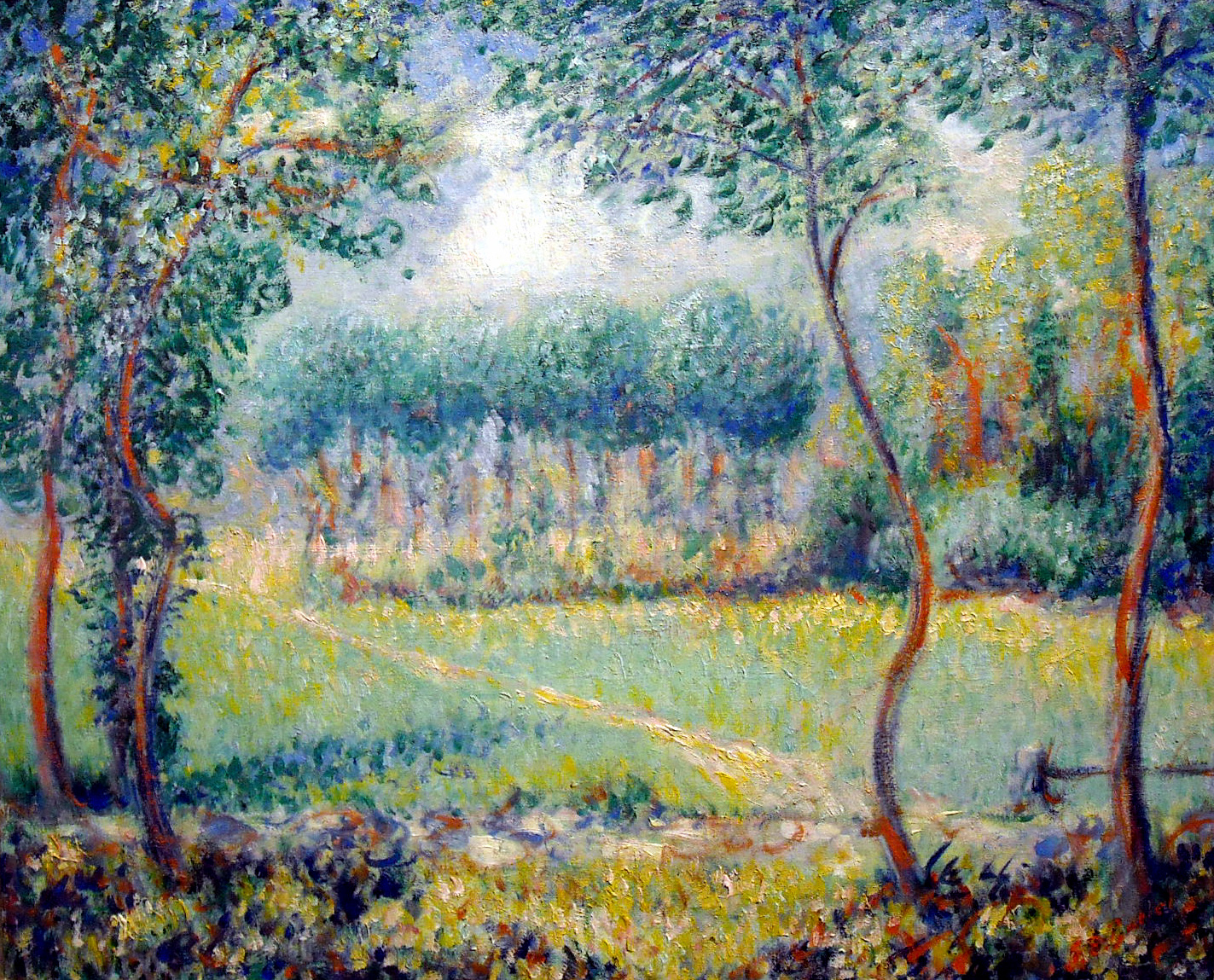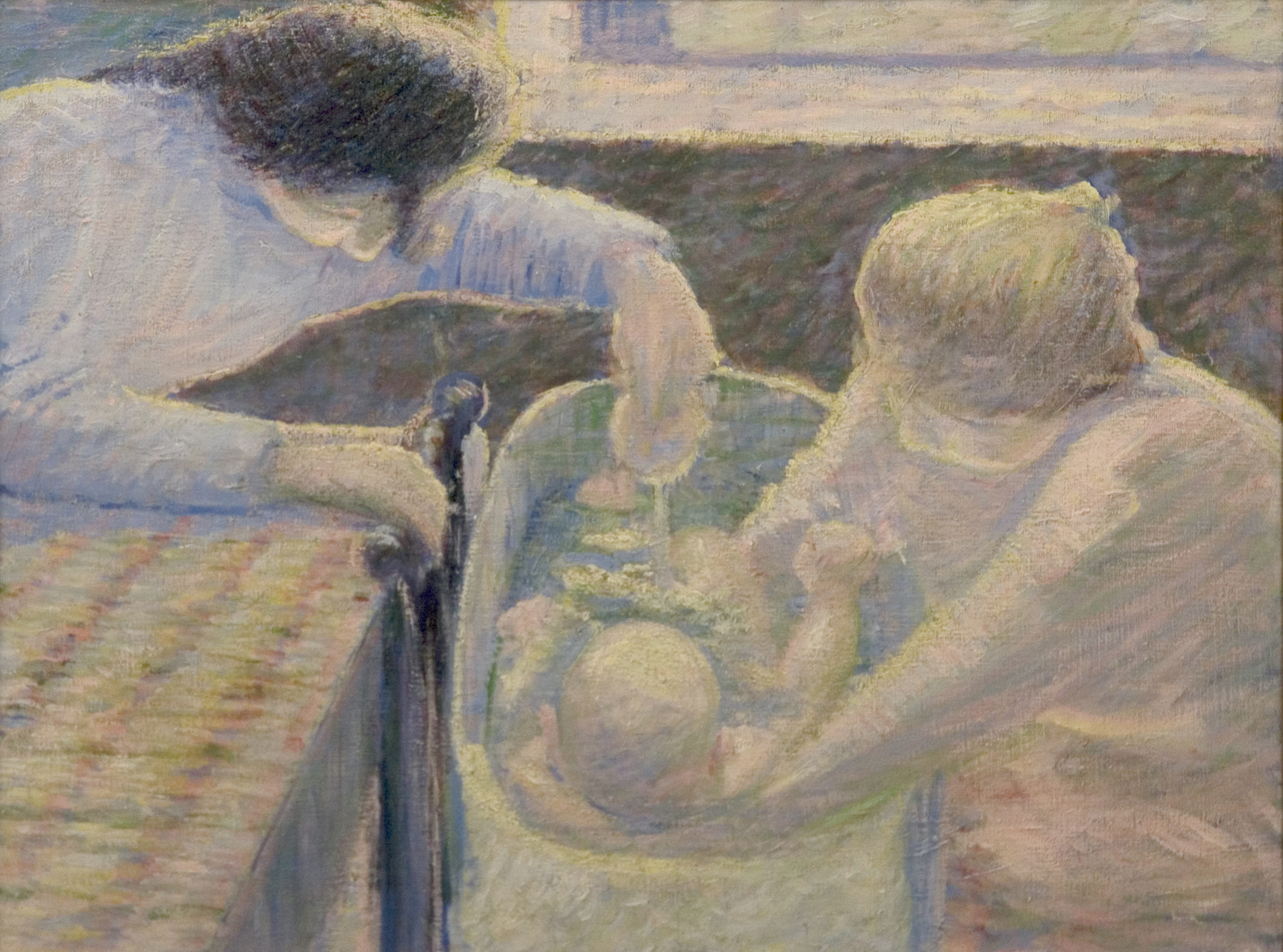Theodore Earl Butler
Theodore Earl Butler (1861-1936), often remembered for his marriage to Suzanne Hoschede-Monet, stepdaughter of and model for Claude Monet, was a formidable painter in his own right, fusing elements of Impressionism and Post-Impressionism into his work. Born in Columbus, Ohio, Butler took art lessons growing up with local artist Albert C. Fauley. In 1882 he departed for New York to study at the Art Students League, where he studied under William Merritt Chase. Three years later, he set sail for Europe.
For the next few years Butler studied at various private studios and schools in Paris, including the Académie Julian. He won an honorable mention at the Paris Salon in 1888. That same year, he met Claude Monet; gradually, he worked his way into Monet’s inner circle, one of few American artists to do so. Under Monet’s guidance, Butler started to develop his style of Impressionism, painting portraits and garden scenes. Later on, he would also incorporate aspects of the Fauvism into his work, especially the bright palettes.
Butler married Suzanne Hoschede-Monet in 1892. The couple had two children, and Butler changed his artistic focus to indoor scenes of the family. After Suzanne’s passing in 1899, Butler briefly moved back to New York City. He returned to France in 1900 to marry another of Claude Monet’s stepdaughters, Marthe, and to establish a home in Giverny, a place American artists frequented. Exhibitions and commissions would occasionally bring him back to the United States, including the famed Armory Show of 1913.
